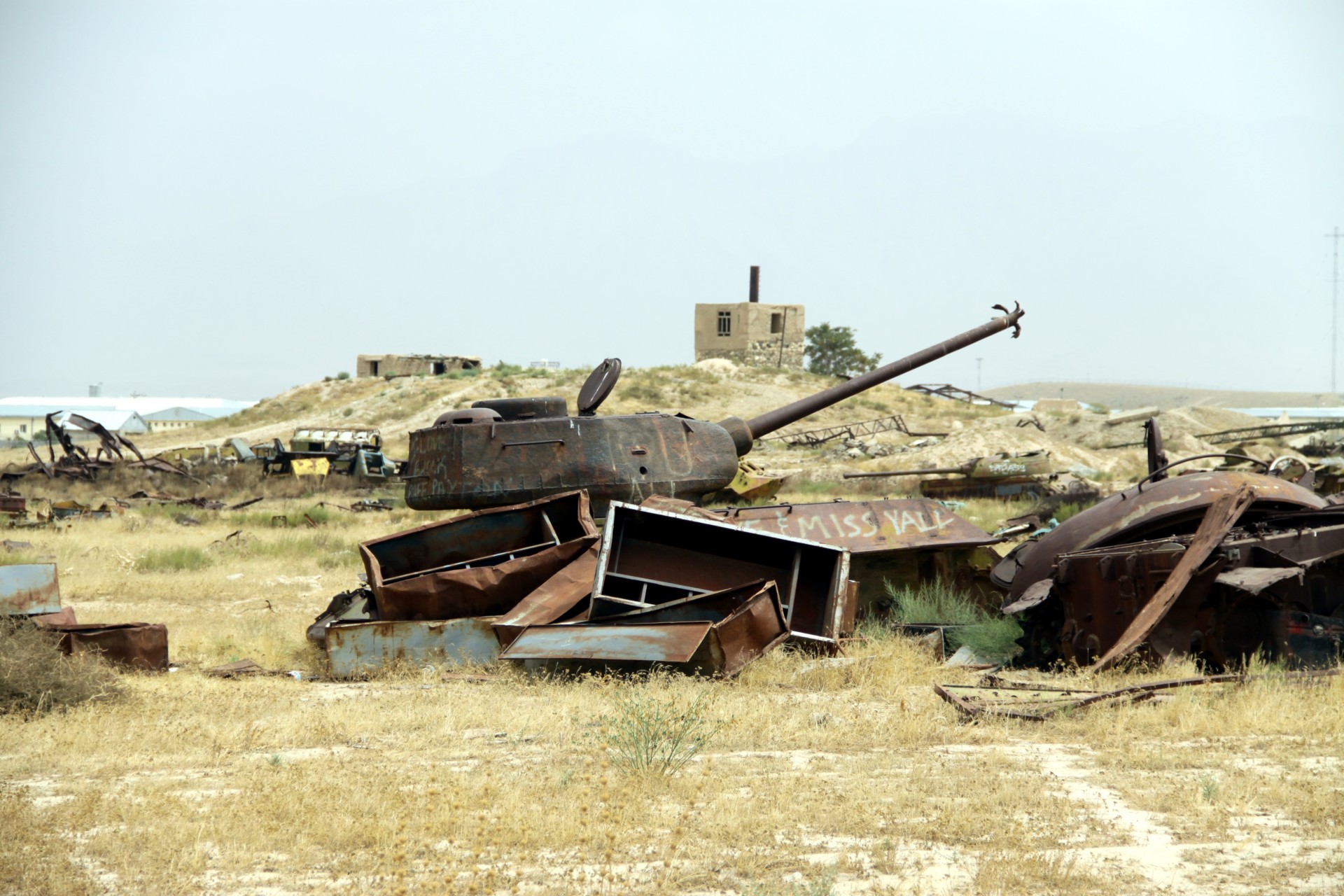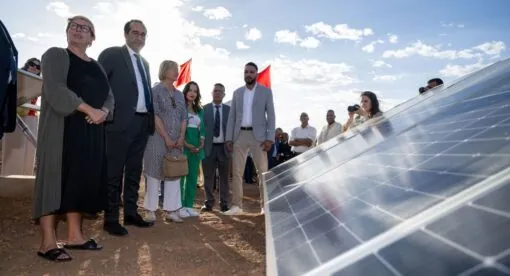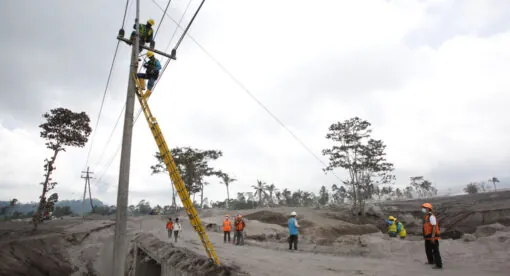Dec. 27 marked 40 years since the Soviet invasion of Afghanistan. The invasion led to a U.S.-Pakistani-Saudi intelligence operation to arm and fund the Mujahideen, the Islamist rebels who fought a guerilla war against the Kremlin’s forces and the communist government that came to power in a coup in 1978. The anniversary came amid public talks between the Trump Administration and the Taliban to try to bring an end to four decades of unremitting conflict in the landlocked southwest Asian nation. On Dec. 28, it appeared that a breakthrough had been reached when reports surfaced that the Taliban’s ruling council had agreed to a cease-fire, but less than 24 hours later the Afghan jihadist movement denied that they had agreed to any cessation of hostilities. Put differently, there does not seem to be any end in sight to the 40-year-old fight.
The Cold-War Origins of the Conflict
The long U.S. engagement with Afghanistan has a complicated and tumultuous past — one that gets overlooked in the efforts to withdraw American troops from the country. But it is well worth remembering what and who brought the United States into this deep entrenchment, and why the U.S. troops have not yet left the region.
The breeding ground for violent extremism was set in the 1980s, when the U.S. effort to win the Cold War enabled the rise of fringe views that grew to prominence — and eventually on a global scale — because Islamist extremists manipulated the religious narrative to their benefit. In the 1980s, the seven-party Afghan Islamist rebel alliance aided by tens of thousands of Arab/Muslim foreign fighters (collectively known as the Mujahideen) received tremendous sympathy in their fight against communism — in some ways, more than the United States had in the preceding decades. Afghanistan’s national sovereignty was secondary to the guerrilla warfare of a people who felt their religion was under attack by a godless ideology. What began as a struggle against a Soviet invasion to impose a communist regime on a significantly traditional Muslim nation quickly turned into an incubator for the already developing ideology of transnational jihadism.
The U.S. efforts to combat the Soviet invasion left a terrorist safe haven of arms and trained fighters in its wake. Ultimately, American actions in the region in the 1980s played a role in the rise of al Qaeda and the broader phenomenon of transnational jihadism as we know it today. Washington’s support for the Islamist insurgents ended as part of the 1988 Geneva Accords that led to Moscow’s military withdrawal in early 1989. But the Marxist regime held out until April 1992, when Islamist rebels toppled it a few months after its benefactor, the Soviet Union, collapsed. However, the war in Afghanistan did not end, as the Islamist factions began fighting each other for power — a process that paved the way for the rise of the Taliban in 1996.
When Sept. 11, 2001, attacks took place, the Taliban were in control of some 90 percent of Afghanistan. After a 12-year interregnum, the United States returned to the region when it decided to effect regime change in Kabul in response to the Taliban’s refusal to stop providing a safe haven for al Qaeda. The war in Afghanistan then moved into its current phase, with many Afghan citizens caught in the crossfire between an American-supported democratic government and the violence inflicted by jihadists who have a stronghold on public opinion.
Negotiating with Extremists
By the 1990s, jihadism was challenging established actors, including states and multilateral organizations. It became the major unintended consequence of the Cold War. Today, these extremist non-state actors are threatening states in many areas in the region — even when those actors attempt to join a political system. As countries that have experienced poor governance try to transition to more stable forms of government, they often face the dilemma of how to mainstream organizations that began as instigators of violent extremism. This is particularly true in two cases: Egypt and Lebanon. Despite the Muslim Brotherhood’s participation in Egypt’s post-Arab Spring elections, it remains evident that the group was unwilling to govern democratically and provide stable governance. In Lebanon, though Hezbollah is a key stakeholder in the country’s democratically elected government, it has tried to dominate the political system through coercive means and has thus plunged the nation into further instability.
The manner in which the Trump Administration has approached the Afghan peace process represents the other side of the problem of trying to forge a power-sharing agreement with violent extremist groups. The need to bring closure to the longest war in American history has Washington fast-tracking the process of mainstreaming the Taliban. Meanwhile, the Taliban have been ambivalent about the United States’ demand for a cease-fire, which could allow for the signing of a preliminary peace treaty. This wavering was evident in the Taliban negotiating team’s announcement that a cease-fire had been accepted and the following statement from the Taliban denying that its leadership had agreed to a cessation of hostilities. (It could also be that the Taliban did not want the announcement to be public and were speaking to their base and rivals in denying the acceptance of a cease-fire.)
If and when a genuine cease-fire agreement is established, the question is whether the Afghan government and the Taliban rebels will be able to build upon it by negotiating a power-sharing settlement. The United States is eager to significantly reduce its military presence in Afghanistan, but doing so may leave the Afghan government vulnerable to increased violence and the loss of control over the country. Likewise, neglecting to make sure the Taliban are part of a new social contract assumes the same risks. The United States, while drawing down forces, must not be in a rush to move on from the country and ought to use its position as a mediator to find a compromise.
Policy Recommendations
In order to remain an effective broker in the Afghan peace process, the United States needs to ensure that all parties are given a voice in a new government — including the Taliban, due to their communal support. However, safeguards should be in place to prevent either side from gaining too much power. Additionally, there needs to be space for a civil society-led movement that would allow the Afghan people to express their political desires without aligning themselves with either group. However, the United States has limited leverage over the Taliban, so a potential deal may involve less favorable terms for the Americans.
The challenge of this lies in not creating another Lebanon; by constitutionally mandating the representation of various groups, the government created will be inflexible and unable to develop organically. The United States, along with all other democracies, needs to examine pathways to defeat jihadist groups, but in a way that does not dismiss the valid concerns that their supporters have. In order for states like Afghanistan to have stable and successful governing bodies, public opinion needs to be expressed through civil society and democratic means.
The peace talks in Doha in 2019 have seen slow progress, with factions of the Taliban still actively working against a permanent peace settlement. The politics of the United States make it clear that the general public does not want to be militarily involved in Afghanistan anymore. Likewise, the Pakistani government wants to rid itself of the continuous insecurity and violence that plagues the western border. Neither side wants to be the guarantor of peace after decades of infighting, but ultimately, both Pakistan and the United States are responsible for the creation of the Taliban and the many years of regional instability.
Minna Jaffery is the Content Manager at the Newlines Institute. Her research focuses on South Asia-Persian Gulf relations, terrorism and ideology, and US national security. She graduated with her MA in Middle Eastern, South Asian, and African Studies from Columbia University, and obtained her BA in Near Eastern Languages and Civilizations and English from the University of Chicago. She has previously worked at the Center for American Progress and the Tow Center for Digital Journalism. She Tweets at @MinnaAJaffery.
The views expressed in this article are those of the author and not an official policy or position of the Newlines Institute.






